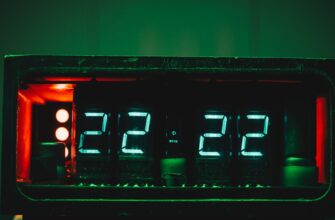- What is an Ethereum Airdrop?
- Essential Preparations Before Claiming Airdrops
- How to Find Legitimate Ethereum Airdrops
- Step-by-Step Guide to Claiming Your Ethereum Airdrop
- After Claiming: Next Steps
- Frequently Asked Questions (FAQ)
- Are Ethereum airdrops really free?
- How do I avoid airdrop scams?
- Do I need KYC for airdrops?
- Can I receive airdrops on Coinbase or Binance?
- How are airdrops taxed?
- How often do Ethereum airdrops happen?
What is an Ethereum Airdrop?
An Ethereum airdrop is a marketing strategy where crypto projects distribute free tokens or coins to wallet addresses to boost awareness, reward early supporters, or decentralize ownership. These airdrops often target users who’ve interacted with DeFi protocols, NFTs, or layer-2 networks. With some airdrops worth thousands of dollars (like Uniswap’s 2020 $UNI drop), learning how to claim them safely is crucial for crypto enthusiasts.
Essential Preparations Before Claiming Airdrops
Follow these steps to get ready:
- Set Up a Secure Wallet: Install a non-custodial wallet like MetaMask, Trust Wallet, or Coinbase Wallet. Never use exchange wallets (e.g., Binance) as they can’t receive most airdrops.
- Fund Your Wallet: Keep a small amount of ETH (0.05-0.1 ETH recommended) for transaction fees (gas) when claiming.
- Enable Security Measures: Activate two-factor authentication, write down your seed phrase offline, and bookmark official project sites to avoid phishing.
- Research Projects: Focus on reputable ecosystems like Ethereum L2s (Arbitrum, Optimism), DeFi apps, or new ERC-20 tokens.
How to Find Legitimate Ethereum Airdrops
Discover genuine opportunities using these resources:
- Airdrop Aggregators: Websites like Airdrops.io, CoinMarketCap Airdrops, or DappRadar filter scams.
- Project Announcements: Follow official Twitter/Discord channels of Ethereum-based projects.
- On-Chain Activity: Interact with testnets, swap tokens on DEXs, or provide liquidity to qualify.
- Red Flags: Avoid “pay-to-claim” offers, unsolicited DM offers, or sites demanding seed phrases.
Step-by-Step Guide to Claiming Your Ethereum Airdrop
- Verify Eligibility: Check the project’s official site or Etherscan to confirm your wallet qualifies.
- Connect Your Wallet: Visit the project’s claim portal and link your wallet (e.g., via MetaMask).
- Approve the Transaction: Sign the claim request in your wallet. Review gas fees carefully.
- Confirm Receipt: Check your wallet balance or use Etherscan to verify token arrival.
- Secure Your Tokens: Move airdropped tokens to a hardware wallet for long-term storage.
After Claiming: Next Steps
Monitor token value on trackers like CoinGecko. Decide whether to hold, trade on DEXs (e.g., Uniswap), or stake for rewards. Track airdrop value for tax reporting—many countries treat them as taxable income.
Frequently Asked Questions (FAQ)
Are Ethereum airdrops really free?
Yes, legitimate airdrops don’t require payment. You’ll only pay Ethereum network gas fees (usually $5-$50) to claim tokens.
How do I avoid airdrop scams?
Never share seed phrases, verify website URLs, and use wallets with phishing detection. Scammers often impersonate support staff on social media.
Do I need KYC for airdrops?
Most DeFi airdrops don’t require KYC. However, some centralized exchanges distributing airdrops might.
Can I receive airdrops on Coinbase or Binance?
Rarely. Exchange wallets lack the necessary smart contract interaction. Always use a self-custody wallet.
How are airdrops taxed?
In the US and EU, airdrops are typically taxed as ordinary income at their fair market value upon receipt. Consult a tax professional.
How often do Ethereum airdrops happen?
Major drops occur 5-10 times yearly, but smaller ones are frequent. Stay active in the ecosystem to maximize opportunities.
By following this guide, you’ll be equipped to safely claim Ethereum airdrops and potentially earn valuable crypto assets. Always prioritize security and due diligence!








